We got a bit behind posting finished projects and blogging, but are back in the saddle and going to catch up. It was a pleasure meeting you (and you know who you are)!
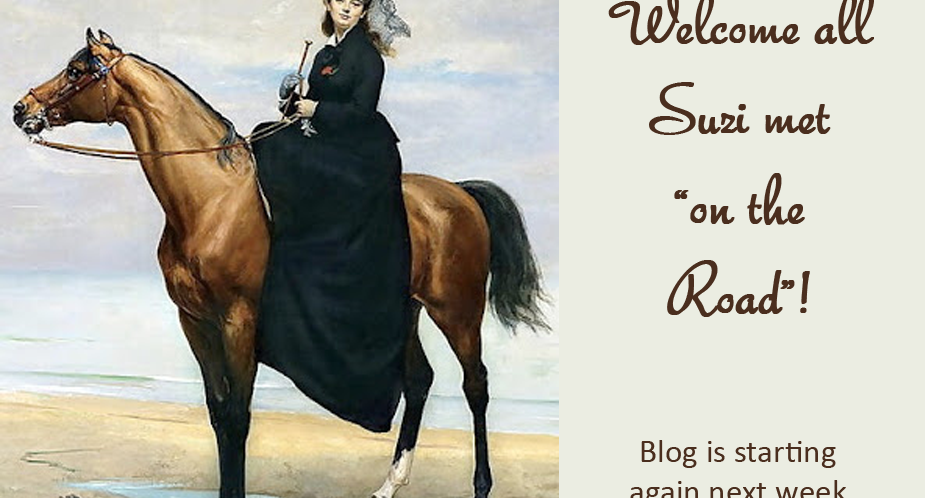

We got a bit behind posting finished projects and blogging, but are back in the saddle and going to catch up. It was a pleasure meeting you (and you know who you are)!
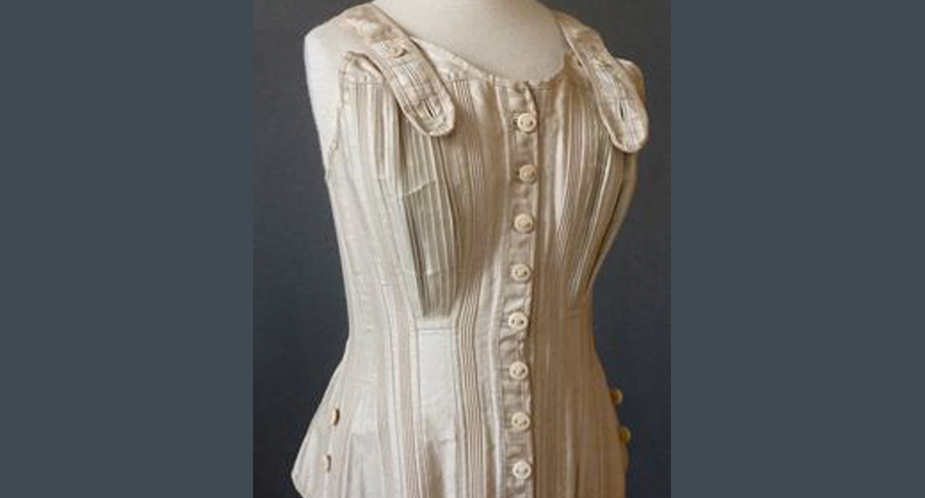
Beginning in about 1810, the new corset began from a simple body bodice made of a strong cotton material called “jean” which would later be known as “coutil” or “couteil”. While the waist was still high like in the early Regency era corsets, there were less pieces used. (Extant: 1810 …
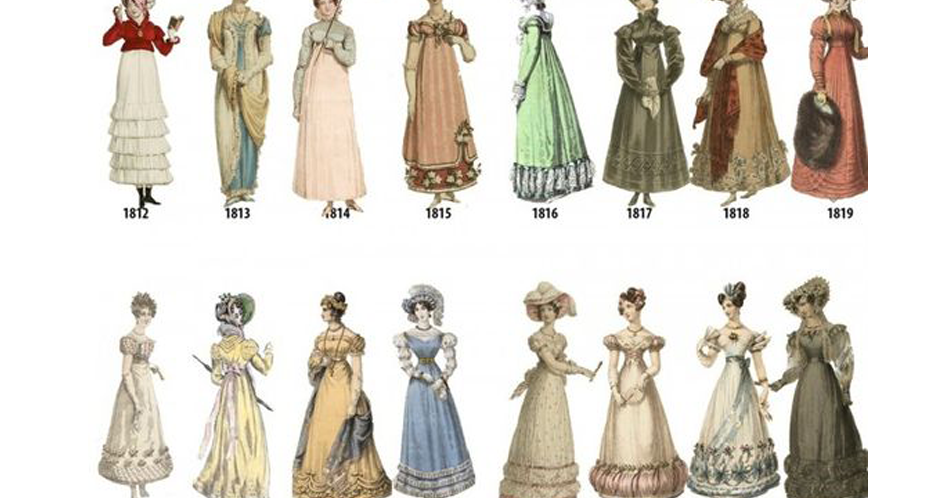
…into the 1820’s, the emphasis changed from the 18th century rigid shaped body and the Regency flowing natural body to a silhouette with a small waist that had big curvy lines flowing out from it above and below. The use of bust and hip gussets assisted the flowing shape of …
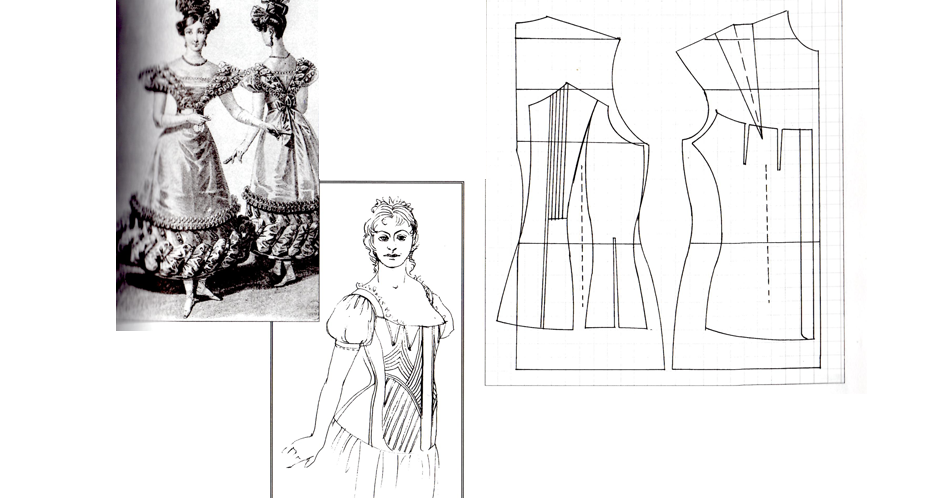
…that was completely different than the preceding “stays” and the transitional Regency “corset”. (Sketches: New corset shape for an emerging fashion era, 1827 to 1830)
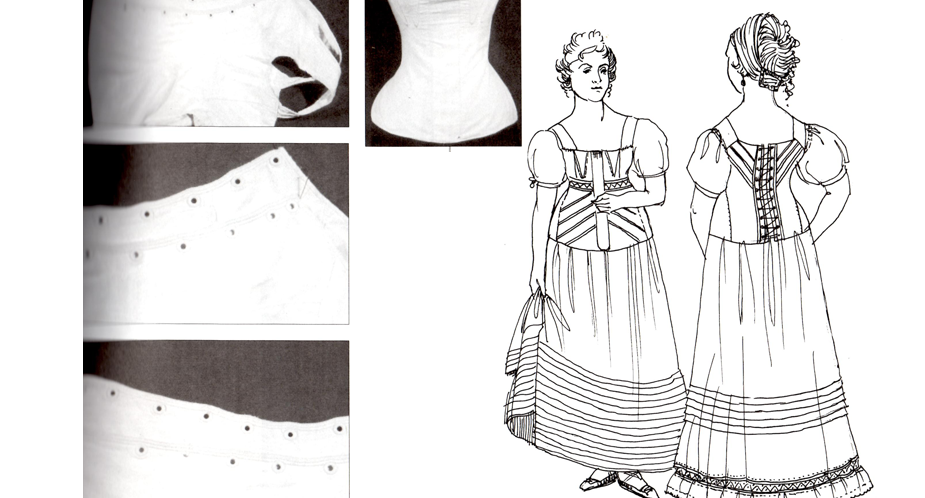
…waist with wider skirts started to return, the name and use of a “corset” became more widely used. (Sketches: the 1827 to 1830 long corset)
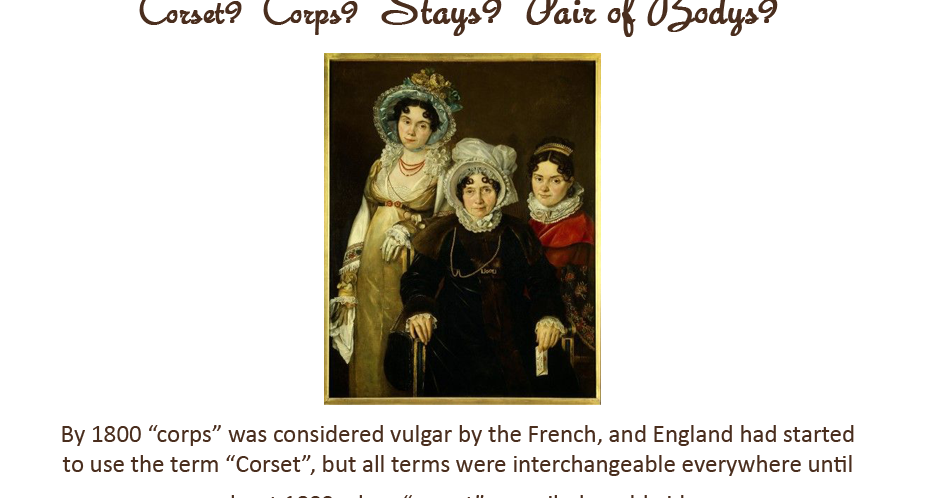
…disappeared entirely, and in France this new undergarment was called a “corset” (“corps” now being considered vulgar). In England the old term “stays” was still used, although the English started to call them “corsets”. Until about 1809, both terms were used interchangeably. (Portrait: “corsets or what?” A noble family with …

As the Regency era at the turn of the 18th into the 19th century (early 1800’s) was the first time in history fashion basically removed all understructure, there were experiments with materials and methods and techniques aimed to produce the perfect Grecian ideal form. There was a long, knitted corset …
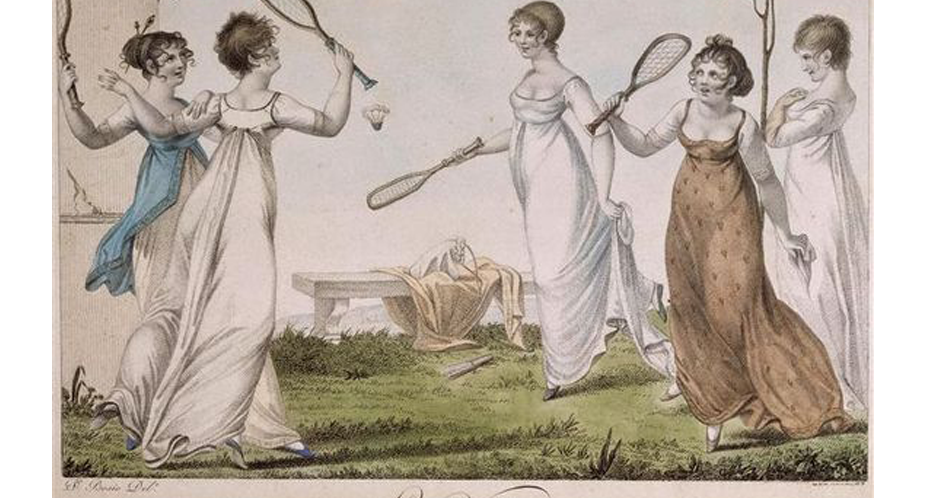
…new and longer stays with lighter boning were reinforced with padding. This type of early “corset”, worn only to control the shape, were not considered fashionable, but a necessity of those without perfect figures. They were much ridiculed in English and French media. (Antique French Cartoon: “Regency Racquet” showing the …
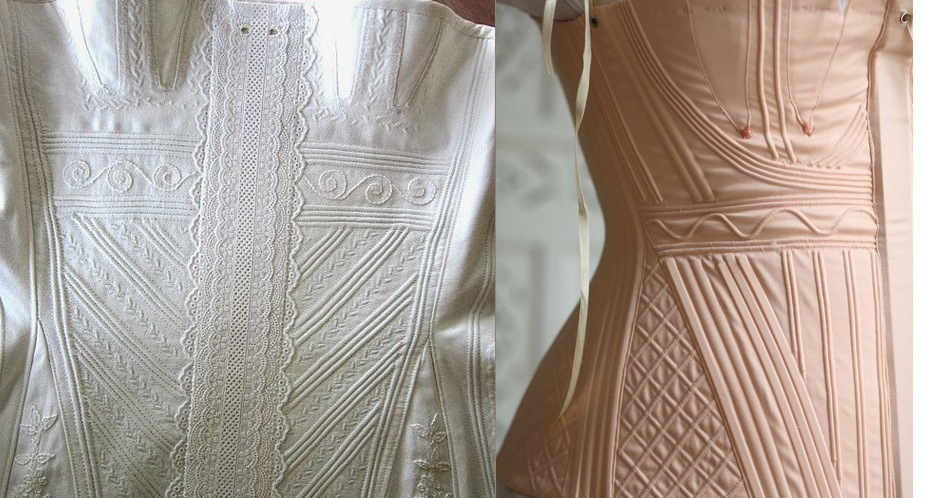
…to go over the hips in order to smooth the line to obtain a semblance of the vertical silhouette of fashion. The tabs were traded for hip gussets so they could be form fitting but still allow leg movement. (Photos: Gorgeous modern reproduction early Regency corsets)
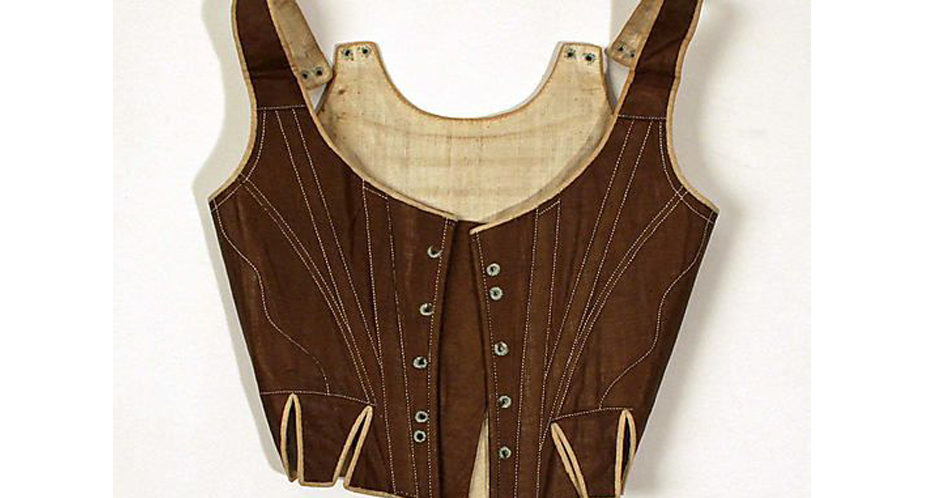
…and especially in England where social norms and mores persisted, whaleboned stays similar to the late 1780’s and 1790’s continued to be worn well into the first decades of the new century. (Extant: late 1790’s short, slightly boned stays/corset)